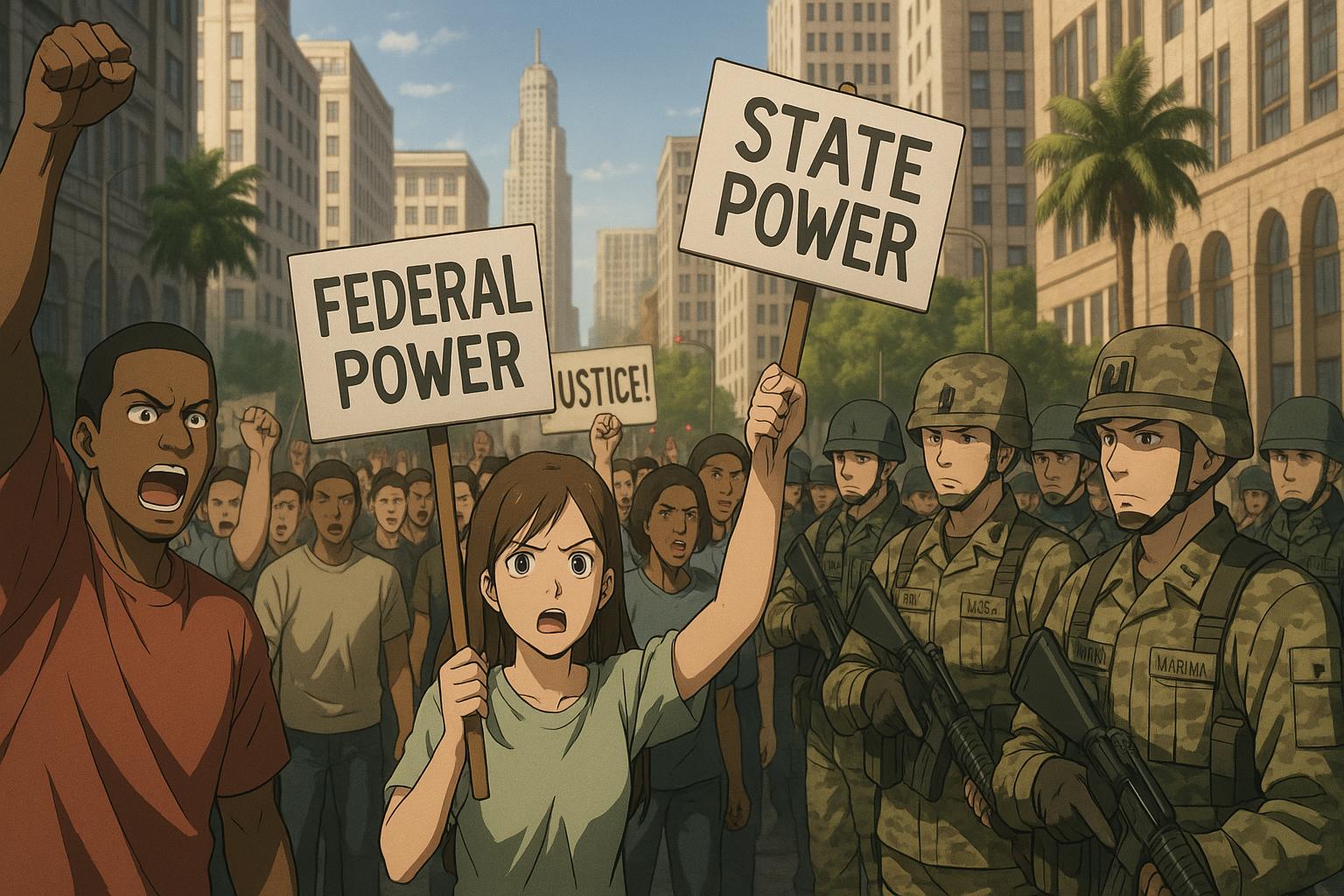In June 2025, Los Angeles found itself at the centre of a fierce national debate as President Donald Trump ordered the deployment of over 4,000 National Guard troops and 700 Marines in response to protests that erupted following widespread Immigration and Customs Enforcement (ICE) raids. This decision evoked memories of previous instances when federal troops were called in to restore order, including the notorious 1992 riots sparked by the acquittal of police officers in the beating of Rodney King. However, the current unrest is markedly different in both scale and dynamics.
Trump’s action, described by critics as an unprecedented overreach of federal authority, was executed without the consent of California Governor Gavin Newsom or Los Angeles Mayor Karen Bass. In stark contrast to the past, where state governors initiated such requests during crises, Trump's unilateral decision was backed by a legal provision allowing federal mobilization in response to perceived rebellion. California's Attorney General, Rob Bonta, has since filed a lawsuit claiming the president's actions violate the Tenth Amendment, alleging that they represent an abuse of power rather than a legitimate governmental response to civil unrest.
The backdrop of these protests stems from widespread discontent regarding aggressive immigration policies, which have intensified under Trump's administration. While the 1992 riots were characterised by violence and destruction, leading to the deaths of more than 60 individuals, the current demonstrations have primarily remained peaceful within a confined area of downtown Los Angeles. Reports indicate that while there have been isolated incidents of vandalism and clashes with law enforcement—resulting in over 50 arrests and minor injuries among both protesters and officers—the situation has not escalated to the levels seen three decades ago.
Despite the largely peaceful nature of the protests, Trump's response has drawn sharp criticism. Observers note that previous federal troop deployments during civil unrest have often involved careful planning and logistical support, which seems lacking in the current deployment. Reports indicate that some National Guard units were ill-prepared and lacked clear operational mandates, raising concerns about the effectiveness and appropriateness of the federal response.
Additionally, the deployment has rekindled fears of political motivations overshadowing genuine public safety concerns. Critics point out that while Trump has publicly portrayed himself as a defender of law enforcement, his administration's actions appear selective—pardon requests for those involved in the January 6 Capitol riots contrast sharply with the heavy-handed approach towards protesters in Los Angeles. Analysts suggest that such discrepancies could undermine public trust in governmental institutions and contribute to a climate of tension rather than order.
As the protests continue, it remains clear that the situation encapsulates a broader struggle over civil rights, immigration policies, and the limits of executive power in American governance. Local leaders have vowed to resist what they see as an unjustified escalation, insisting that dialogue rather than military presence should be the approach taken to resolve the communal unrest. This unfolding narrative will likely play a crucial role in the political landscape, as it raises pivotal questions about state versus federal authority and the implications of militarising civil disputes.
📌 Reference Map:
Source: Noah Wire Services
